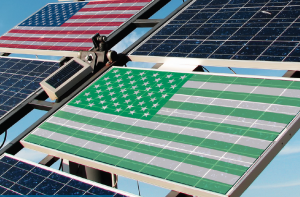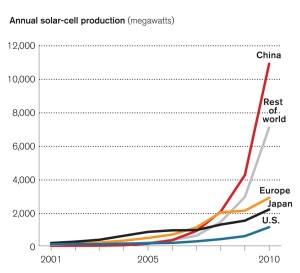U.S Solar Manufacturing Could Make a Comeback

For the last 4 or 5 years, cheap solar panels flooding over from China have helped fuel a boom for U.S. solar installers. The nation installed a record shattering 4,750 MW’s of solar in 2013, a 41% increase over 2012. Utility scale, rooftop, and all other kinds of solar energy are benefiting from rock bottom Chinese module prices, which now stand as low as $0.50 per watt. However, there is a downside to these low prices. Domestic U.S solar manufacturers have been reeling from the intense competition. In an all too familiar story of domestic manufacturing being shipped off shores, observers have predicted that a sizable amount of the 75 U.S solar manufacturers may go out of business by 2015.
Fearing such a drastic shock to the industry, the U.S has recently imposed punitive tariffs on Chinese panels. Many U.S manufacturers claim that Chinese solar companies were able to sell panels below cost because of government subsidies that broke fair trade laws. The tariffs are stiff, ranging from 18 to 36%. Manufactures have cheered the ruling, but its hard to say how the tariffs might affect installation prices in the near term. However, it seems likely that they won’t do too much damage to the trend of falling prices.

Some U.S manufacturers already have plans to revolutionize the U.S solar industry now that they feel protected from aggressive Chinese economics. U.S based First Solar recently announced that they were able to produce modules at $0.59 per watt, which is only $0.09/W higher than the Chinese record. They project domestic prices to fall into the low $0.40’s/W in the near future. Another company named Solar City, which is run by Tesla CEO Elon Musk, has plans to open a solar manufacturing facility capable of being able to produce 1GW of panels per year. Solar City hopes to use economies of scale to produce very high efficient solar modules at the same price as cheap low efficiency Chinese panels.
Success in ventures like these could put U.S solar manufacturing back on the map, while at the same time support, or even accelerate the rapid demand for solar installations. Regardless of the short term volatility the industry may experience, solar energy is posed for great things.